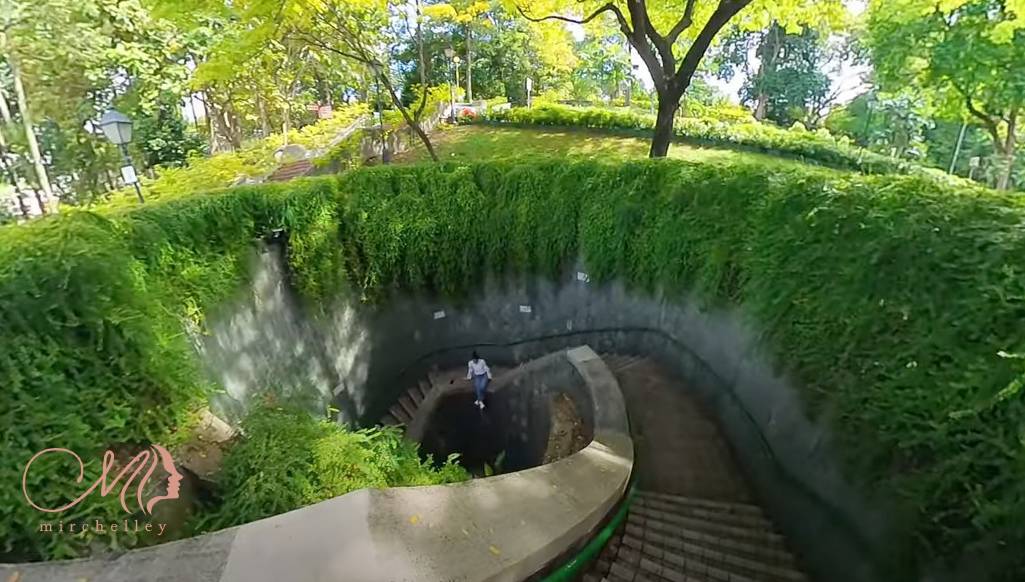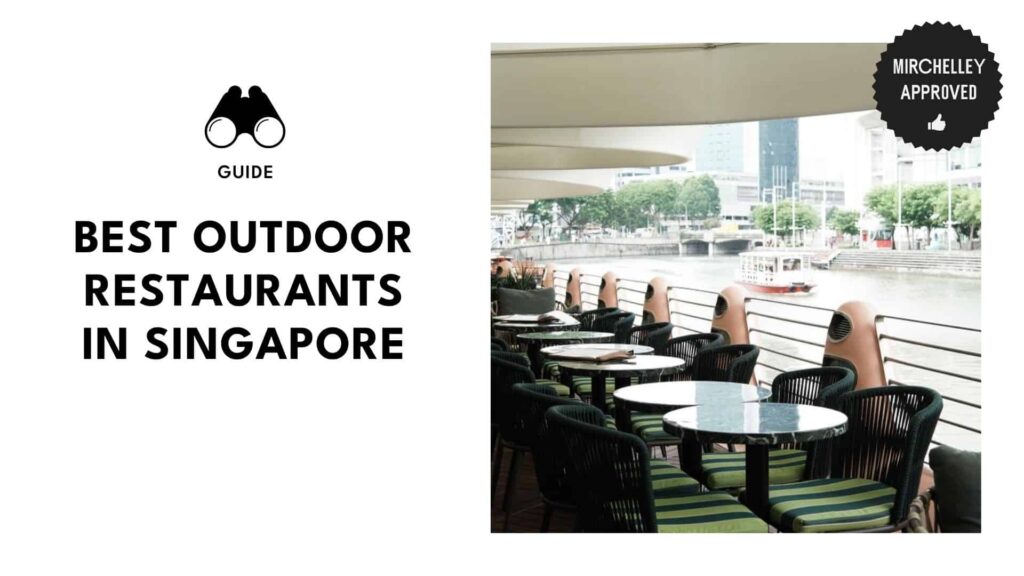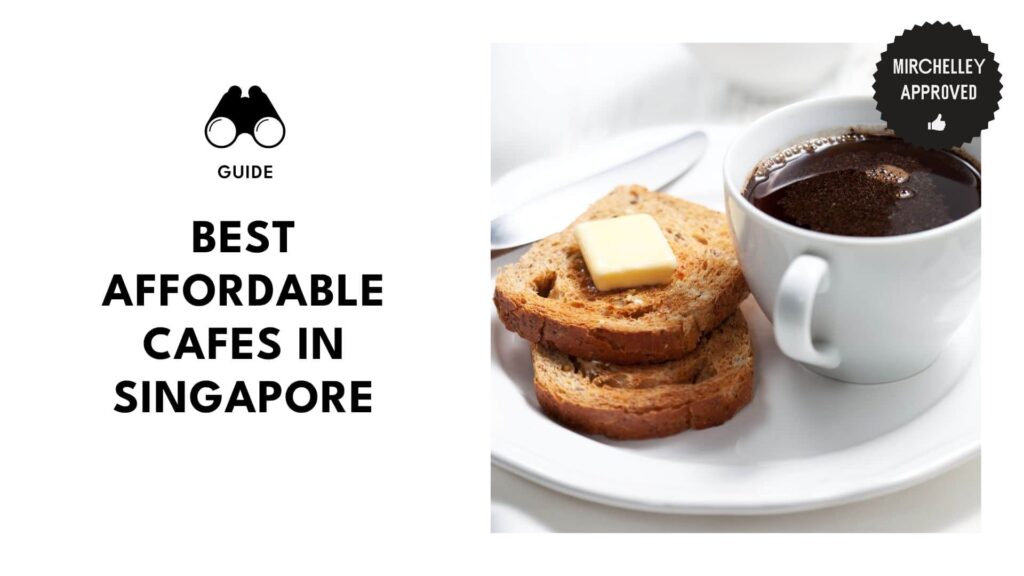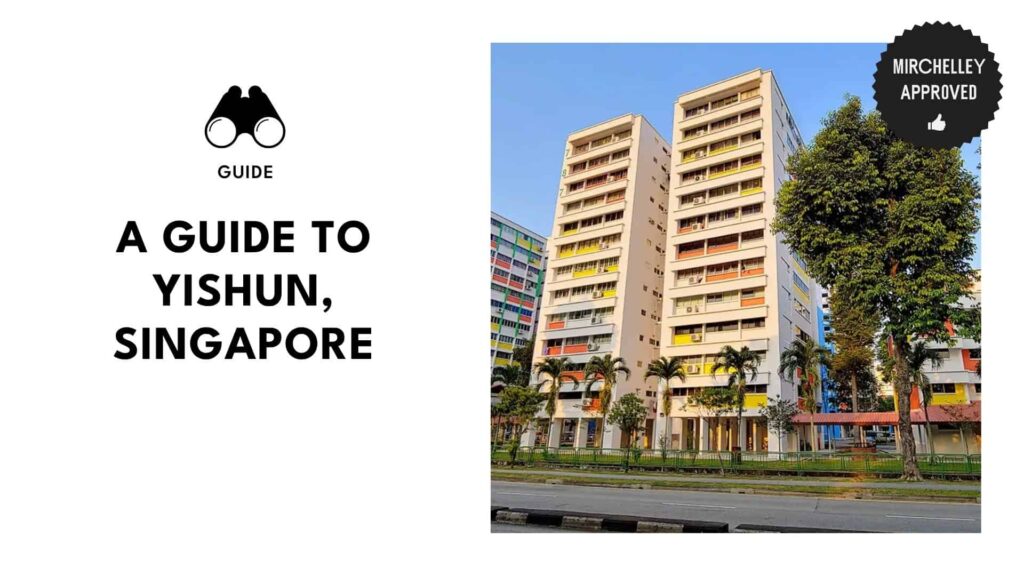Categories > Guides and Tips

Fort Canning Park Singapore: A Complete Guide for History Buffs
- History of Fort Canning Park: A Look From Then and Now
- Fort Canning Park Hours
- Is there an entrance fee in Fort Canning Park?
- How to Get to Fort Canning Park
- Fort Canning Park Facilities
- Carpark
- Restroom
- Vending Machine
- Places to Visit in Fort Canning Park
- Armenian Street Park
- Artisan’s Garden
- Farquhar Garden
- First Botanic Garden
- Fort Canning Heritage
- Jubilee Park
- Pancur Larangan
- Raffles Garden
- Spice Garden
- Sang Nila Utama Garden
- Best Photo Spot in Fort Canning Park
- Must-try Restaurants and Cafes at Fort Canning Park
- Tiong Bahru Bakery
- Le Jardin Restaurant
- Tips When Visiting Fort Canning Park
- Find the best entrance.
- Wear comfortable clothes.
- Bring extra clothing.
- Bring a water bottle.
- Pack mosquito repellent.
- Bring an umbrella or raincoat.
- Use sunblock.
As someone who has an interest in Singapore’s rich history, Fort Canning is a park that always lands at the top of my favorite places to visit. This 18-hectare land is a bastion of the country’s colonial heritage.
What I love about this park is that it stood as a witness to Singapore’s growth. From a land ruled by ancient Malays to a country sieged by the British Army to what is known now as the fastest thriving country in the East, Fort Canning has seen through it all.
In this blog, I will show you all the exciting details that you need to know about Fort Canning. Find out how to visit the park, which places to go to, what activities to enjoy, and what restaurants to try out below.
History of Fort Canning Park: A Look From Then and Now

As a history buff, I always enjoy the relics and the story hidden behind the structures of Fort Canning Park. This park is built on top of a 48-meter-high hill and was home to some of the most historically significant buildings in the country.
This park witnessed Singapore as a British colony and saw its rise as a thriving nation. The hill where Fort Canning stood was there when the country was ruled by ancient Malay kings.
During the time of the Malays, the hill of Fort Canning used to be a place where the craftsmen for the royal family plied their trade. You can still see evidence of this in the Artisan’s Garden.
The Malay way of life is still evident in some of the edifices within the park. One structure that I absolutely love is the Pancur Larangan which is still intact up to this day.
According to the info board posted in the park, the Pancur Larangan is where the ancient ladies of the Malay king used to take a bath. This open spring with beautiful carvings was reserved for the ladies of the court alone and not for the commoners.
After the Malays, the hill was claimed by the British colonial officer, Sir Stamford Raffles. The governor chose this land to build his residence in 1822 and called it Government Hill or Singapore Hill.
Raffles ordered Singapore’s first botanic garden to be built right on the hill. His purpose for establishing the garden is to stimulate farming in the region and encourage the citizens of the country to invest in agriculture.
Raffles’ house was demolished in 1859 due to security concerns and the British Empire constructed a fort in its place. After the reconstruction, the British Empire changed the name of the hill to Fort Canning in 1861.
It was named after the first Viceroy of India and Governor-general, Viscount Charles John Canning. The fortress was later used by the Japanese and British armies until they handed it over to the Singaporean Armed Forces (SAF) in 1963.
SAF vacated the hill in 1972 and it was turned into a public park called the Central Park. After another renaming in 1981, the hill became known as the Fort Canning Park.
Fort Canning Park Hours

Fort Canning Park is open to the public 24/7. However, the lighting is only turned on from 7:00 AM to 7:00 PM daily.
The other establishments in the park also follow different operating hours. The Battlebox is open from 9:30 AM to 5:30 PM every Friday to Sunday and public holidays.
Meanwhile, the Fort Canning Heritage Gallery in the park is only open from 10:00 AM to 6:00 PM, Monday to Friday. The only time it will be closed is on the last Monday of each month.
Is there an entrance fee in Fort Canning Park?

There are no entrance fees at Fort Canning Park. You can enjoy entry anytime you want without worrying about tickets.
Singapore maintains free admission to all of its public parks and Fort Canning is part of this effort. Since the entrance fee is free, you are expected to do your part in keeping the park clean.
How to Get to Fort Canning Park

To get to Fort Canning Park, you can take the MRT to Fort Canning Station or ride buses 106, 143, and 147. You can also get there by car or taxi by simply typing in Fort Canning Park on your vehicle’s GPS.
The easiest and fastest way to get to Fort Canning Park is by taking the MRT to Fort Canning Park Station on the Downtown Line. Take an exit at point B to get to the park entrance.
Other options include taking the MRT to Dhoby Dhaut Station (North-South Line, Circle Line, and North East Line), Bras Basah Station (Circle Line), and Clarke Quay Station (North East Line) then walking a small distance to the park entrance.
If you are traveling by bus, make sure to take the 106, 143, and 147 transport lines. These are the ones that pass by the Fort Canning Park entrance.
If you are traveling by car or taxi, simply type in Fort Canning Park in your GPS app. This will redirect you to the closest park entrance to your location.
There are more than 11 entrances around the park and you can access some of these via the car park or public stops and stations.
The table below will show you which entrances are accessible by car, MRT, or bus.
| Park Entrance | Road Name | Car | MRT | Bus |
| Fort Canning MRT | River Vallet road | ✗ | ✓ | ✓ |
| The Foothills | River Valley road | ✗ | ✓ | ✓ |
| Opposite Clarke Quay | River Valley road | ✗ | ✗ | ✓ |
| Old Hill Street Police Station | Hill Street | ✗ | ✗ | ✓ |
| ROM Carpark | Canning Rise | ✓ | ✗ | ✗ |
| National Museum of Singapore | Stamford road | ✓ | ✓ | ✓ |
| Fort Canning Park Tree Tunnel | Penang road | ✗ | ✓ | ✓ |
| Hotel Fort Canning | Clemenceau Ave. | ✗ | ✗ | ✓ |
| Pancur Larangan | Clemenceau Ave. | ✗ | ✗ | ✓ |
| Clemenceau Ave car park | Clemenceau Ave. | ✓ | ✓ | ✓ |
Fort Canning Park Facilities

Different facilities can be hard to find, especially in a place as big as Fort Canning Park. In the section below, I will guide you on the location of the park’s restrooms, carparks, and vending machines.
Carpark
There are several carparks in Fort Canning, each close to the park entrance. Check them out below and find the perfect location to park your car during your trip.
| Name | Location |
| Carpark A at Canning Walk | Fort Canning Car Park A |
| Carpark B at Percival Road | Fort Canning Car Park B |
| Carpark C at Fort Canning Hotel | Fort Canning Car Park C |
| Carpark at Clemenceau Ave/Jubilee Park | Clemenceau Ave Car Park |
| Carpark at Registry of Marriage (ROM) | Registry of Marriages Carpark |
Restroom
Despite how big Fort Canning is, there are only 5 restrooms around the park. Use the table below to find the closest restroom to you.
| Name | Location |
| Restroom at The Foothills | Toilets |
| Restroom at Fort Canning Lighthouse | Toilets |
| Restroom at Fort Canning Hotel for guests | Hotel Fort Canning |
| Restroom at Le Jardin for restaurant guests | Le Jardin Restaurant |
| Restroom at Canning Center | Fort Canning Centre |
Vending Machine
The only vending machine in Fort Canning is located near the Lighthouse on the unnamed road. You can grab water and your choice of soda in this machine.
Places to Visit in Fort Canning Park
Fort Canning Park is a treasure cove of beautiful nature and historical sceneries. In the section below, I will show you the list of places you shouldn’t miss on your visit.
Armenian Street Park

This beautiful street features buildings that implement Peranakan architecture, which is full of vivid colors and details. I love how the whole street embodies the vibrant culture of the Peranakan people.
As far as I know, the structures are part of the 2019 project that sought to create a public space for events. The street helped connect the Civic District, Canning Park, Bugis, and Bras Basah together.
Armenian Street Park created opportunities for the arts, cultural, and heritage precinct to expand and create a fully immersive experience for the visitors.
The overall scheme of the whole street creates a wonderful synergy between the surrounding buildings and the structure outdoors like the Armenian Church and Peranakan Museum.
If you explore the street, you will see multiple plants placed in mobile planters to represent the culture of Peranakan. You may find plants that are used for common Chinese and Malaysian cuisine like curry and Nyonya.
Artisan’s Garden

The Artisan’s Garden is one of the 9 classic gardens in Fort Canning Park. It’s placed in the exact same spot where 14th-century craftsmen built their workshops and sleeping quarters.
What’s unique about this park is that it used to be one of the few places in the 14th century that is open to non-royals. Since it is located on the lower eastern slope of the hill, it was very accessible to the commoners that used to live by the marsh and forest.
As someone who has an interest in history, I find it fascinating that this garden is one of the last archeological dig sites that is retained in Singapore. You will find plenty of materials around the area that can educate you on excavation methods used by the Malays.
Farquhar Garden

Farquhar is one of the gardens in Fort Canning that is named after the first British Resident and Commandant of Singapore, Major-General William Farquhar.
The Major-General is a well-known naturalist who commissions and compiles unique wildlife and natural history drawings of the Malay Peninsula. In this garden, you will see his collection of drawings in giant frames.
Some of the living paintings you will see are pictures of jujube, guava, gambier, and taro.
First Botanic Garden

Singapore’s first botanical and experimental garden was created in 1822. It was established for the purpose of growing economic crops and spices that helped boost Singapore’s economy.
Today, this garden features the different crops introduced to Singapore in the early colonial era. You can see the planting scape of the First Botanic Garden divided into five major zones: timber, latex & resin, ornamental, forest fruits, and coastal riverine.
The latex and resin zone features the Hevea and Para rubber tree that was used to form the materials. These trees were one of the major commodities in the country before rubber trees became popular in Singapore.
From the name itself, the timber zone features different tree species in the country. These trees are useful for bark and timber and some of them have been around since 1822.
The ornamental section of the garden is the most popular spot among the zones. It’s the locals’ favorite sightseeing destination since it features all kinds of flowering plants and ornamental trees.
This section of the garden is also close to the recreational park, which is one of the most visited areas of Fort Canning. Meanwhile, the forest fruit zone is where you will find plants like the rambutan, durian, and duke.
Finally, the coastal riverine is where the Stamford Canal is located. It’s filled with riverine vegetation that grows close to the moist walls of the fountains.
Fort Canning Heritage

Fort Canning Heritage Gallery covers the south wing of the Fort Canning Center. To make it easier for you to explore the gallery, I recommend visiting it by zone.
The heritage is divided into five zones, each of which focuses on the hills’ significance in Singapore’s history and early colonial trades. What I find exciting about this gallery is that it always features new events and exhibits.
The admission is free so you can come by as often as you want. It is a fun and educational experience that I think you shouldn’t miss out on.
Jubilee Park

Jubilee Park is an ideal place to go if you are coming to Fort Canning with your kids or younger siblings. This area of the park features tons of recreational activities for kids and adults.
There are slides, swings, pools, and obstacle courses that are accessible to the public. I personally enjoy going by the River Valley Swimming Pool, National Theatre, and Van Kleef Aquarium.
At the foot of the fort, you will also see a huge playground where kids can have fun and be active.
Pancur Larangan

Pancur Laranga, also known as the Forbidden Spring, is a popular spot located right at the face of Fort Canning Hill. This spring used to be the bathing place of the royal ladies of the Singapura court.
The walls of this beautiful spring feature a handcrafted mural depicting the 14th-century lifestyle of Malays. It was commissioned by Eng Slak Loy.
What I love about this spring is that visitors are permitted to take a bath in it. I recommend bringing extra clothes when you drop by so you can get the full experience of Pancur Laranga.
Raffles Garden

This beautiful garden is named after the founder of modern Singapore, Sir Stamford Raffles. It honors Raffles as an avid naturalist who was passionate about botany and wildlife.
Since Raffles loves plants, this garden features the diverse species of flora that he encountered in his travels all across Southeast Asia. I find this place educational since it also has placards that introduce every plant species.
Spice Garden

It might be due to the modern look and organized way that this garden is presented, but the Spice Gallery is one of my favorite places to visit in Fort Canning Park.
Everything about this gallery is beautiful. The patterned walkways, boxed plants, circular staircase, and interactive displays will absolutely make you fall in love.
From the moment you enter the gallery, you will be greeted by the sweet scent of spices like the gambier, nutmeg, and pepper. You will see actual plants in boxes so you can get familiar with what these spices looked like before they are harvested and processed.
I find the exhibits educational in a fun way. Most of the displays are interactive so you can slide the images or rotate the picture wheel.
There are also posters that feature the description, scientific name, and story of the plants.
Sang Nila Utama Garden

The Sang Nila Utama garden is arguably one of the most popular gardens in the Fort Canning Park mainly due to its Bali vibes. This traditional garden features the iconic Javanese split gates.
The split gates are believed to be marks of the entrance towards a new realm based on the Austronesian culture.
Inside the gates, there are brick structures that house all kinds of plants including Ixoras, Magnolias, and other perfume plants significant in the Javanese culture. I personally love the tranquil atmosphere that this garden emanates.
Best Photo Spot in Fort Canning Park

The best photo spot in Fort Canning Park is the Spiral staircase located near the Fort Canning Tree Tunnel.
This wonderful staircase that combines an industrial look and nature brings opportunities for the most creative shots.
A lot of people love to pose on the midpoint of the staircase and take a photo from below to capture the look of the tree above.
You can easily get to this part of Fort Canning through the Dhoby Ghaut MRT Exit A. Walk a little towards the UBS building and follow the directions from the Battlebox located at the entrance of the spiral stairs.
Other notable spots for photos include the Sang Nila Utama split gates and the Spice Gallery garden staircase.
Must-try Restaurants and Cafes at Fort Canning Park
Once you get your fill of the view, you can fill your tummy and satisfy your cravings in the cafes and restaurants near Fort Canning Park. The list below features my top choices as a local.
Tiong Bahru Bakery

| Name | Location | Contact | Operating Hours | Best Dishes |
| Tiong Bahru Bakery | 70 River Valley Rd, #01-05, Singapore 179037 | +6568774865 | 7:30 AM to 7:00 PM | – Pain Au Chocolat – Almond Chocolate Croissant – Lemon Tart |
Tiong Bahru is one of the most popular local pastry and coffee brands in Singapore and its Fort Canning branch is the perfect place to try its freshly baked goods.
It offers different flavors of croissants and cinnamon rolls. The sandwiches are also exquisite with the coffee.
The prices for the pastries can range from $4 to 15 while the drinks have an average price of $7. Personally, I think the prices are worth it for the quality of the food you will get.
Le Jardin Restaurant

| Name | Location | Contact | Operating Hours | Best Dishes |
| Le Jardin Restaurant | 5 Cox Terrace, Level 2 Fort Canning Arts Centre, Singapore 179620 | +6588709977 | 9:00 AM to 9:00 PM | – Croissant Waffle – Wagyu Beef Burger – Wild Mushroom Soup |
If you are feeling a little fancy, I highly recommend trying out the Le Jardin Restaurant located in the Fort Canning Arts Center. This beautiful restaurant is overlooking the lush garden of the park, giving it a tranquil atmosphere.
Aside from the breathtaking view and layout of this restaurant, the food served is also praiseworthy. On my visit, I ordered the Wagyu Beef Burger for $28 and I absolutely loved it!
The meat of the burger is juicy and cooked to my preference. The serving is also generous and the waiting time is not that long compared to other restaurants.
Some of the meals are a little on the expensive side, especially the pastries, but the unique flavor and the presentation of each dish are worth the extra dollar spent.
Tips When Visiting Fort Canning Park

To get the full experience of Fort Canning Park, I recommend following the tips that I will provide below.
Find the best entrance.
The entrances to the park are far apart, so you need to find one that is closest to your location. Additionally, you should make sure that this entrance can accommodate your chosen mode of transport.
There are entrances that don’t feature a car park nearby so it wouldn’t be ideal to bring a car into these areas.
Wear comfortable clothes.
Unless your plan is to take photos and go as soon as you arrive in the park, you wouldn’t like wearing too fashionable clothes in Fort Canning Park. This place is intended for you to enjoy nature and to encourage recreational activities.
The best outfits for you to wear are those that will allow you to move easily and comfortably. If you have sportswear, I recommend bringing those too.
It would also serve you well to bring comfortable shoes that you can walk on for hours. It won’t be a fun trip if you end up with blisters all over your foot while walking the park trails.
Bring extra clothing.
If you intend to get the full experience of the park and bathe in the Forbidden Spring, I suggest bringing a set of extra clothes with you. Bringing extras is also useful in ensuring that you won’t walk around the park in sweaty clothes all day.
Bring a water bottle.
Getting a drink or a cold beverage in Fort Canning Park isn’t easy. To avoid dehydration, I recommend bringing your own water bottle.
This will not just save you money, it will also ensure that you have a drink with you when you need it. If you can, you should bring a thermos bottle so your drink can remain cold or hot for the duration of your trip
Pack mosquito repellent.
Getting mosquito bites in open areas surrounded by trees is inevitable. Unless you’re wearing clothes that cover your whole body, I suggest bringing mosquito repellent with you and lathering it all over your body before entering the park.
If you don’t like the sticky feeling of repellent lotion, you can also opt for a mosquito patch, although it’s less effective in preventing insect bites.
Bring an umbrella or raincoat.
The weather can be unpredictable and since the Fort Canning Park features the outdoors, there will be no way for you to protect yourself. To avoid the sun or rain, you should bring an umbrella with you.
Use sunblock.
If you plan on spending a lot of time in the park, I suggest using sunblock to prevent any burns or damage to your skin. The sun can be particularly harsh during the summer, so you should keep this tip in mind if you plan on visiting during this season.
Fort Canning Park is home to Singapore’s most beautiful gardens and historical artifacts. It features important landmarks to the country’s culture that you won’t see anywhere else.
If you are interested in learning more about the diverse cultures, history, and nature of the country, I highly recommend coming by this park and checking out the galleries. The entrance is free anyway so you can enjoy a trip whenever you want.




